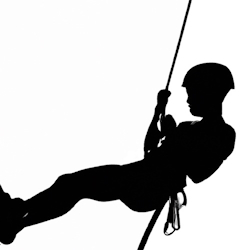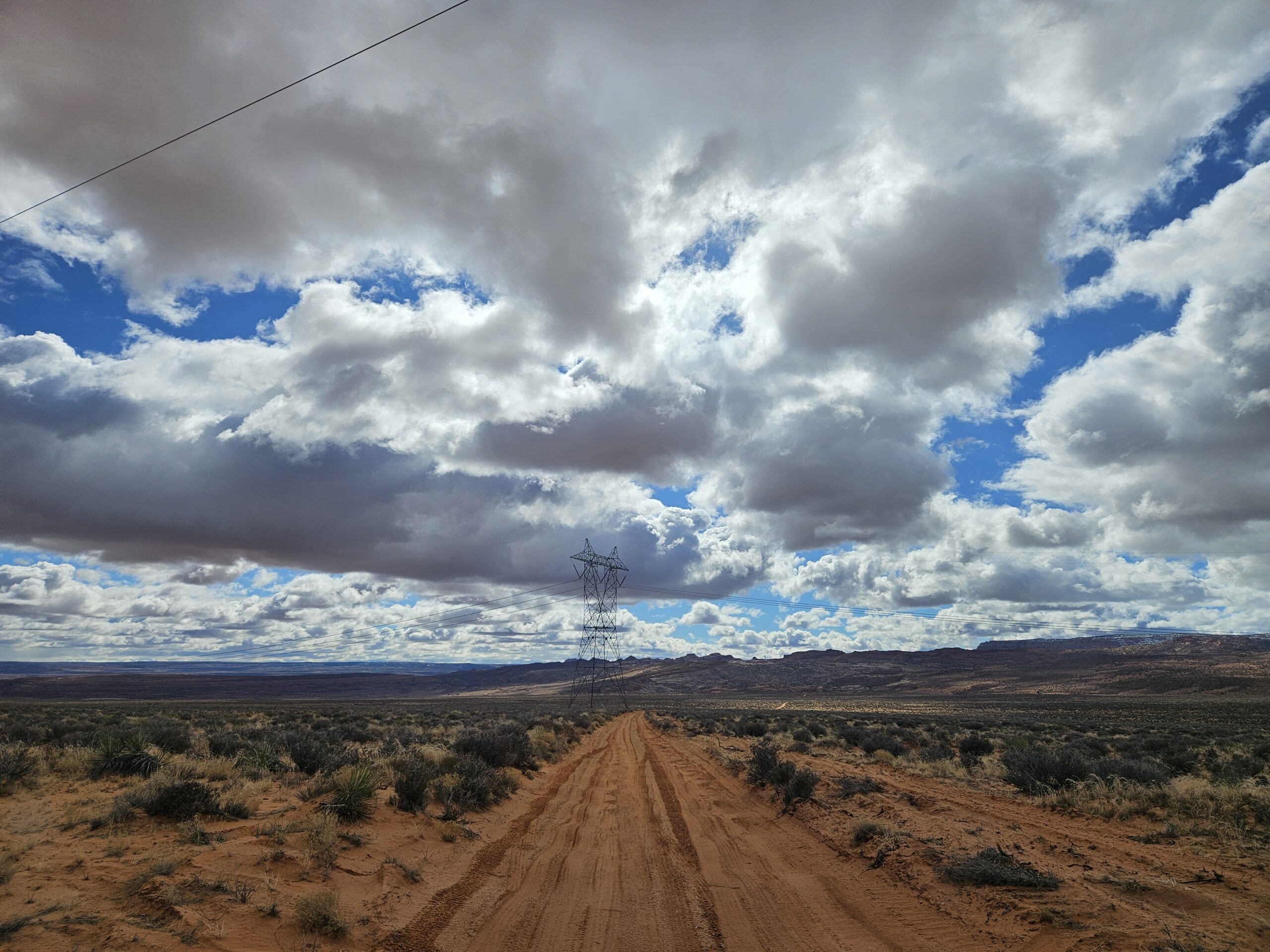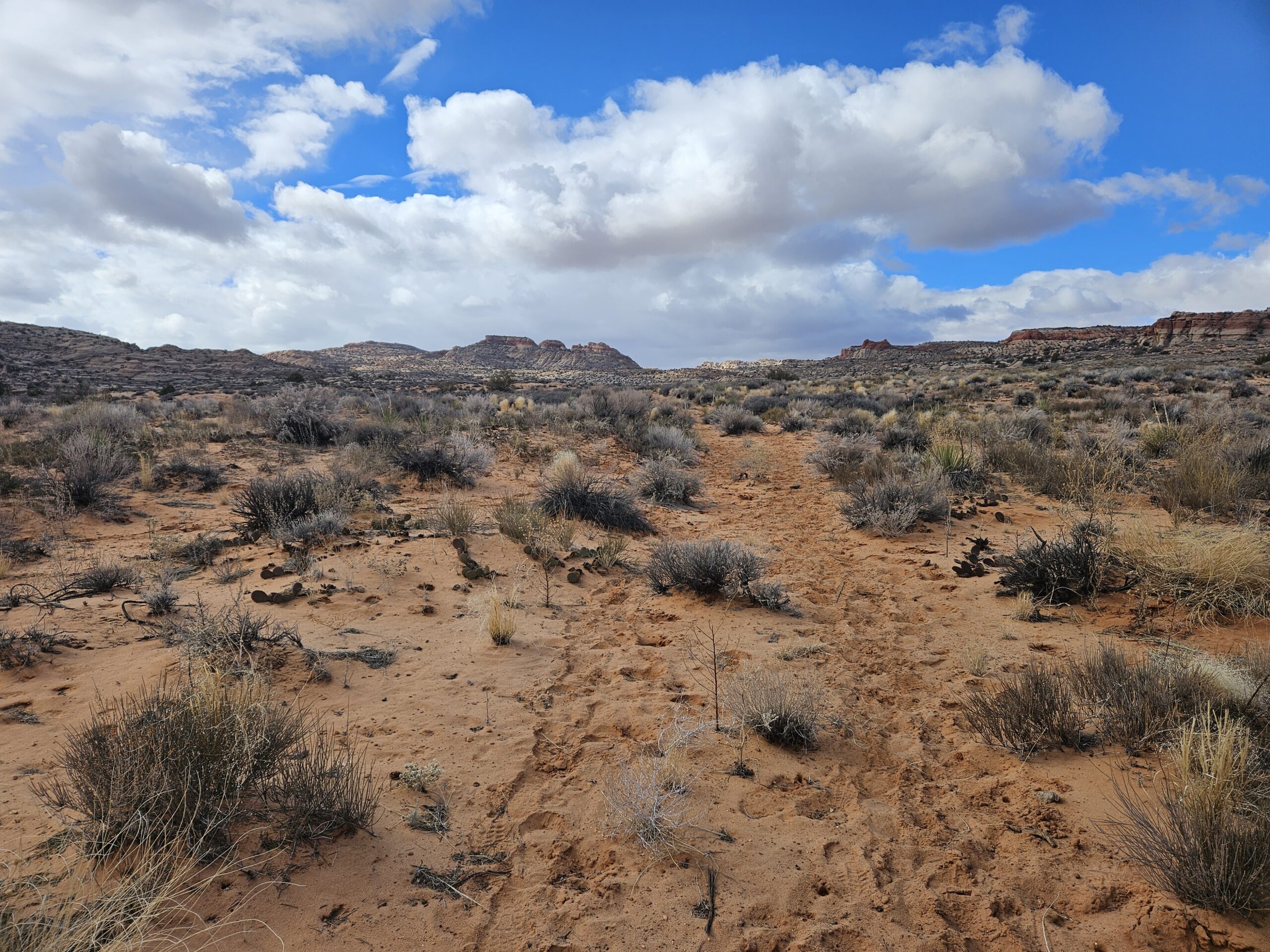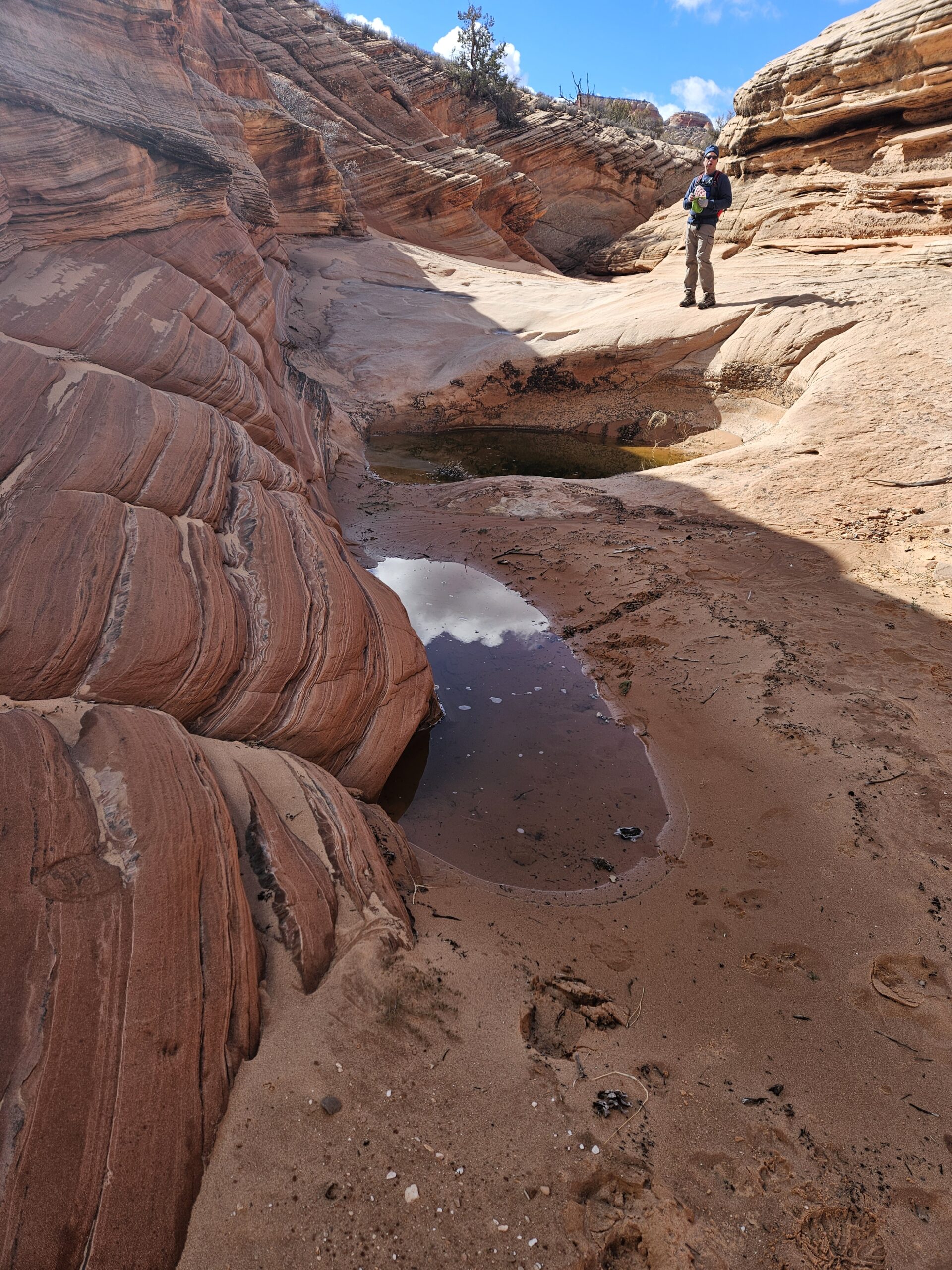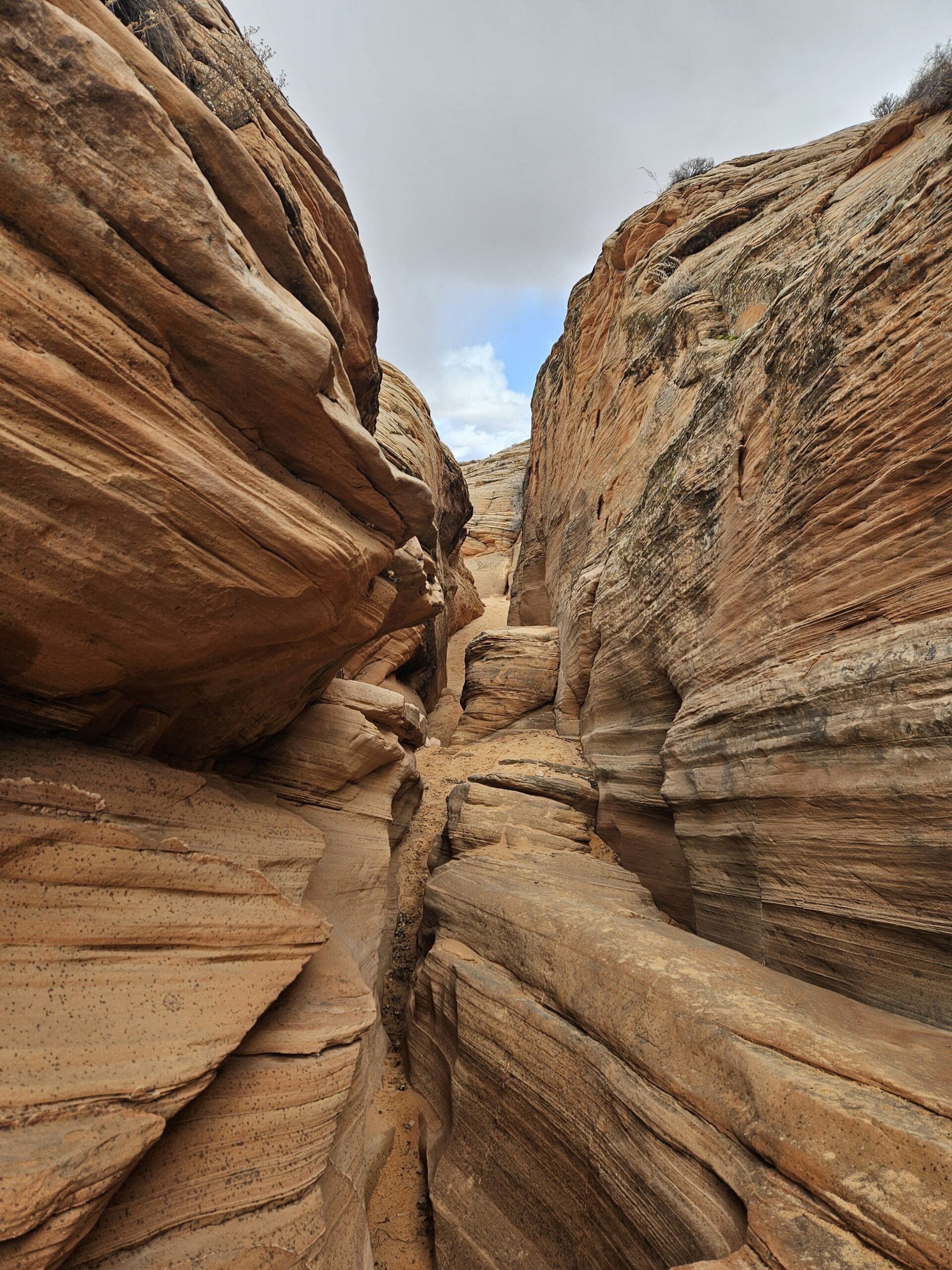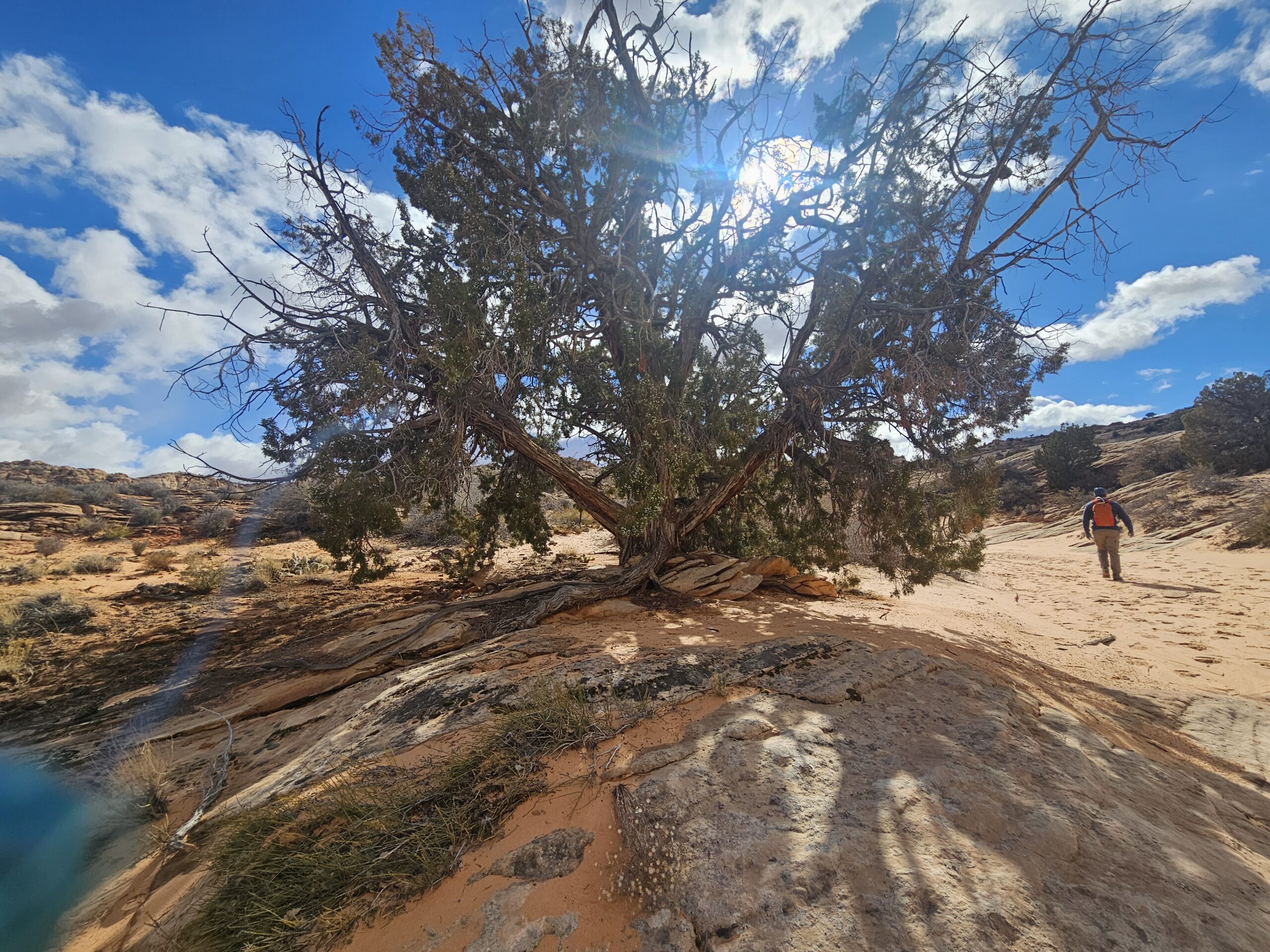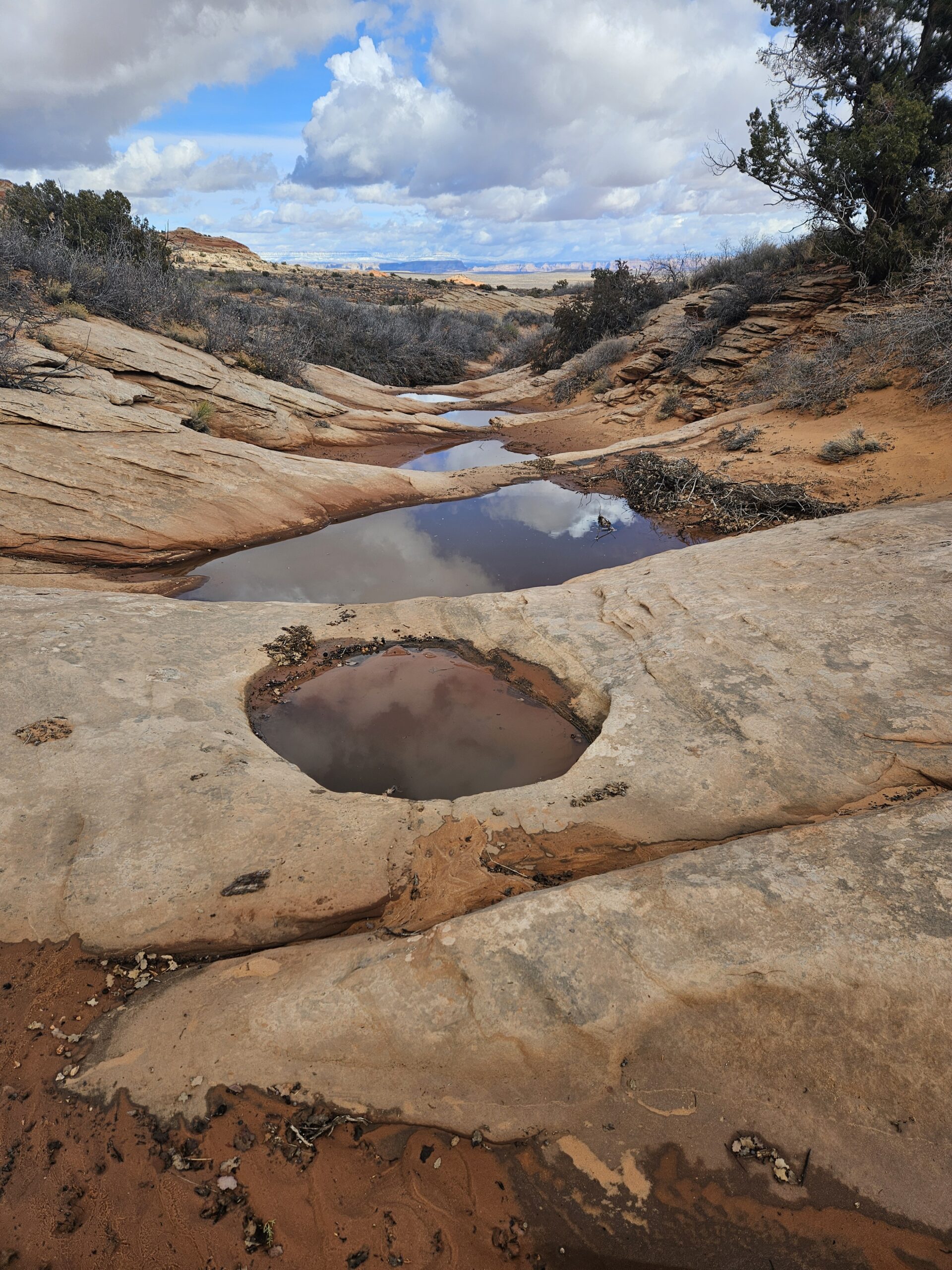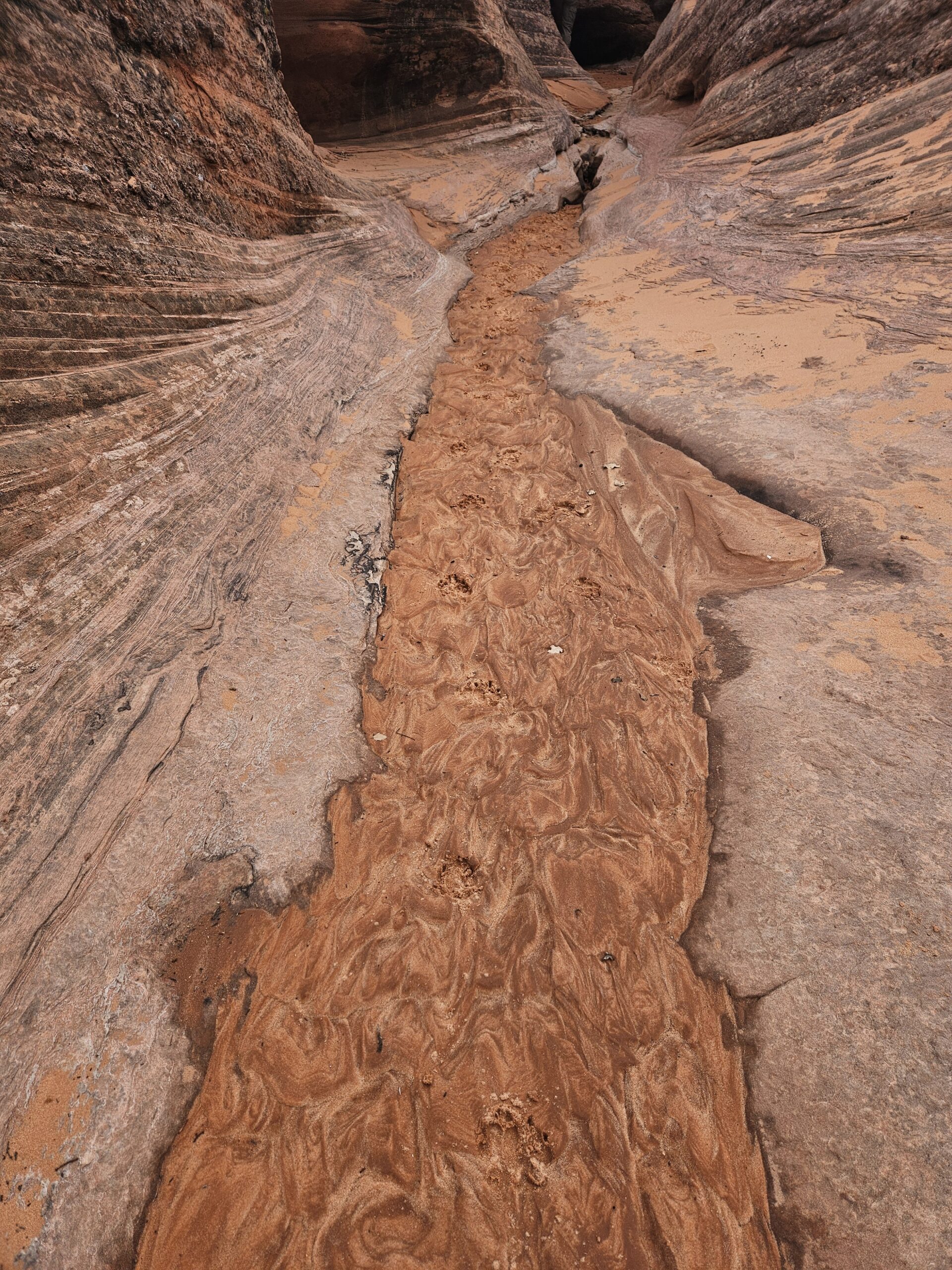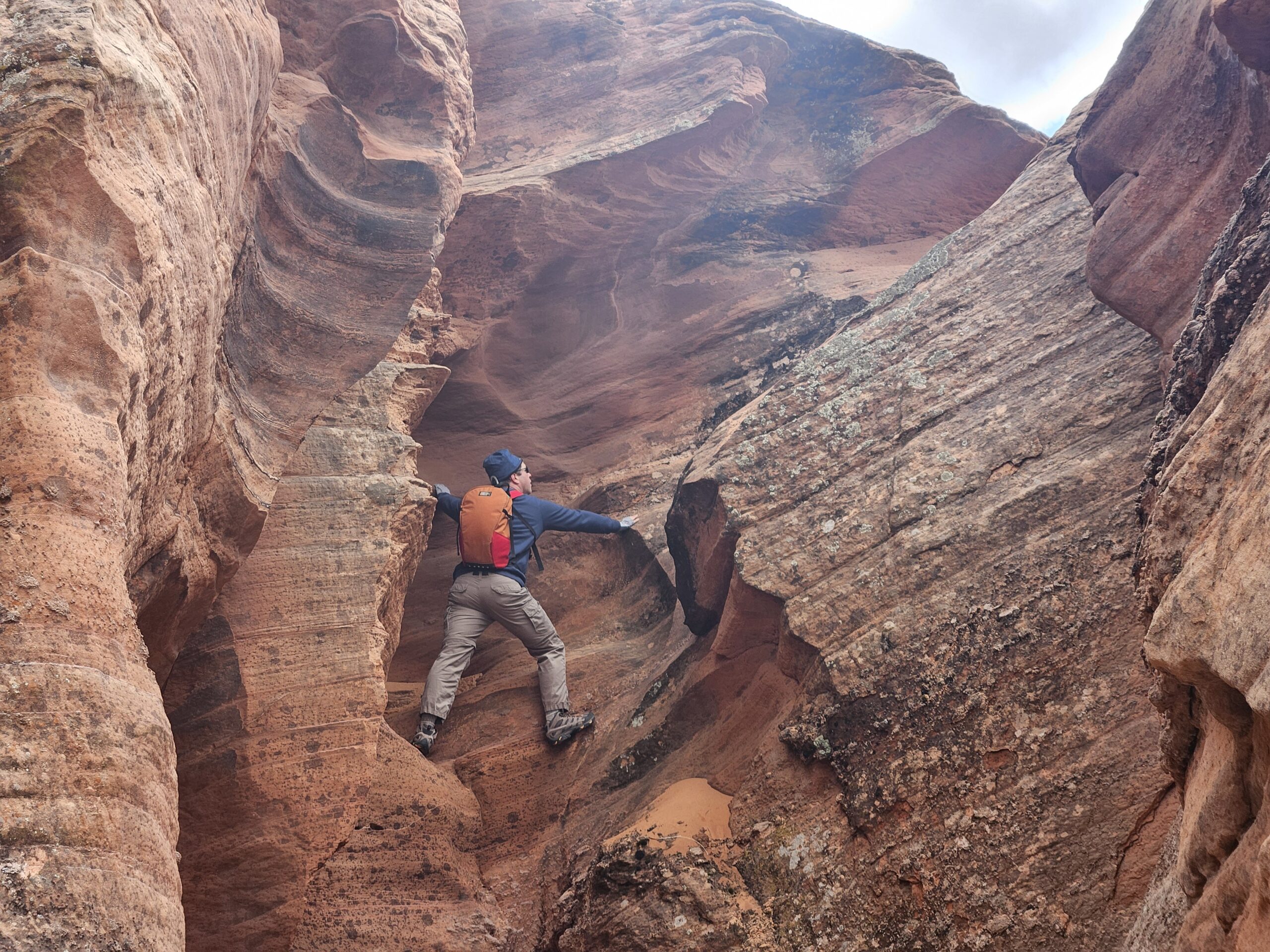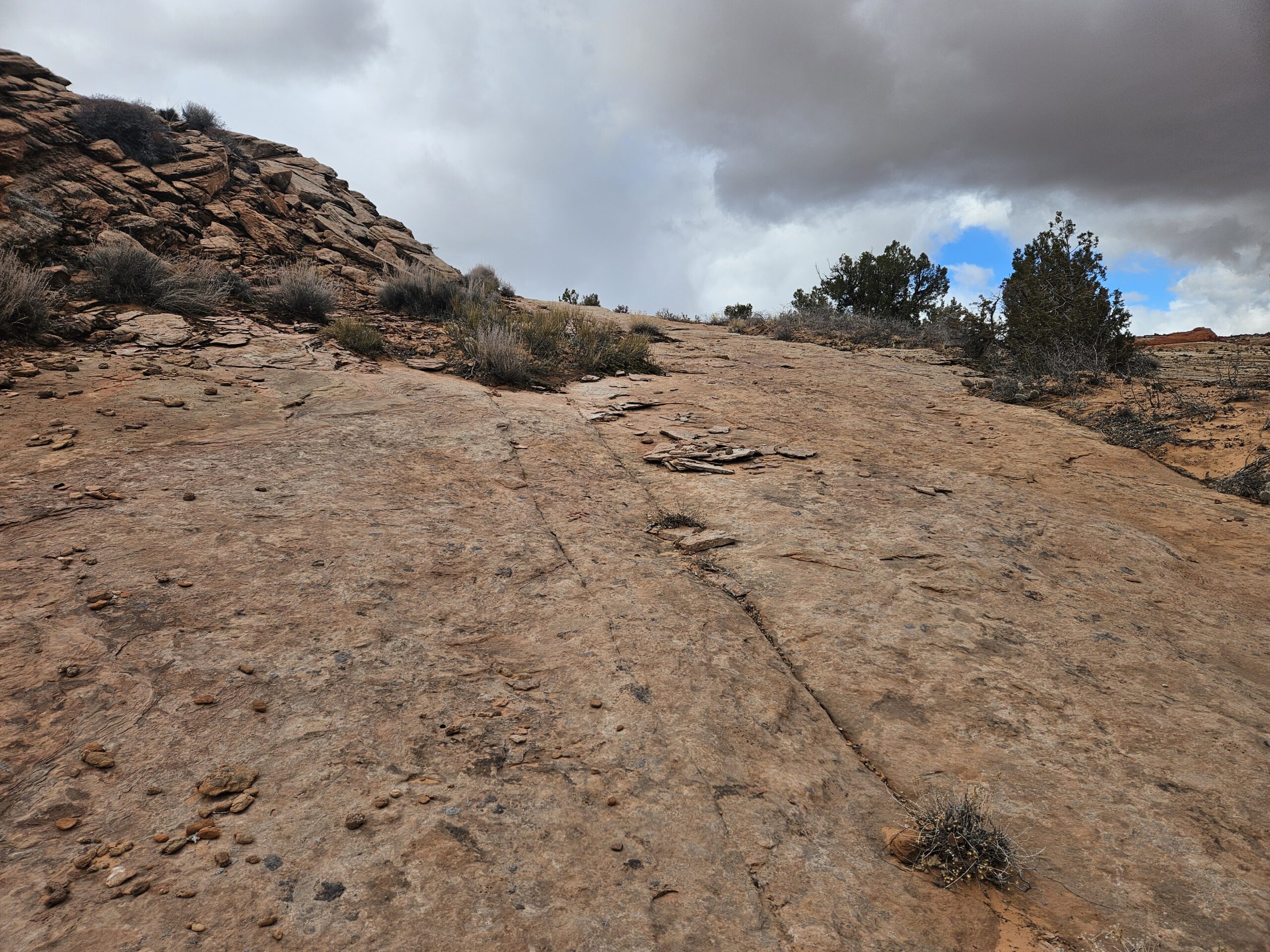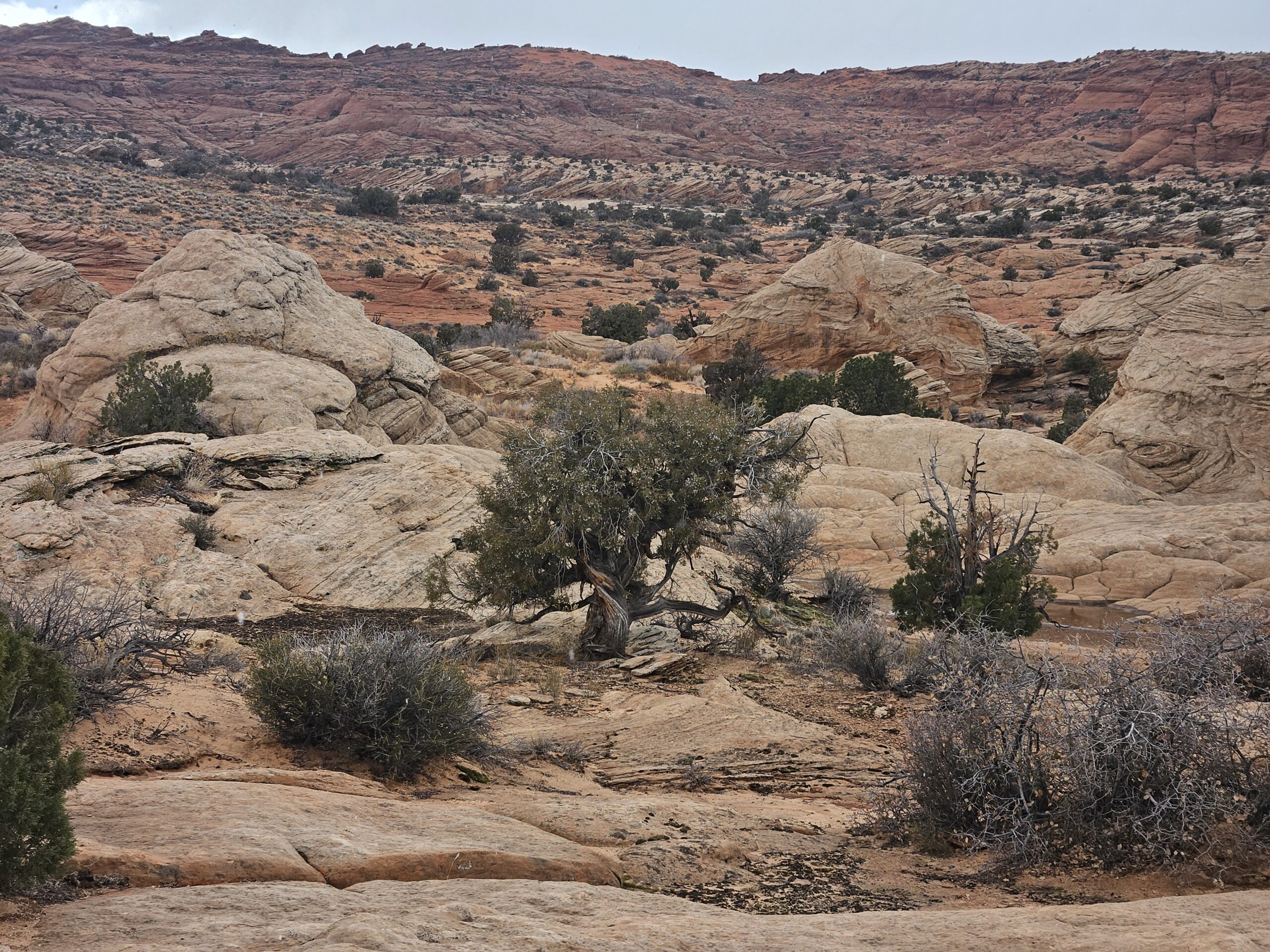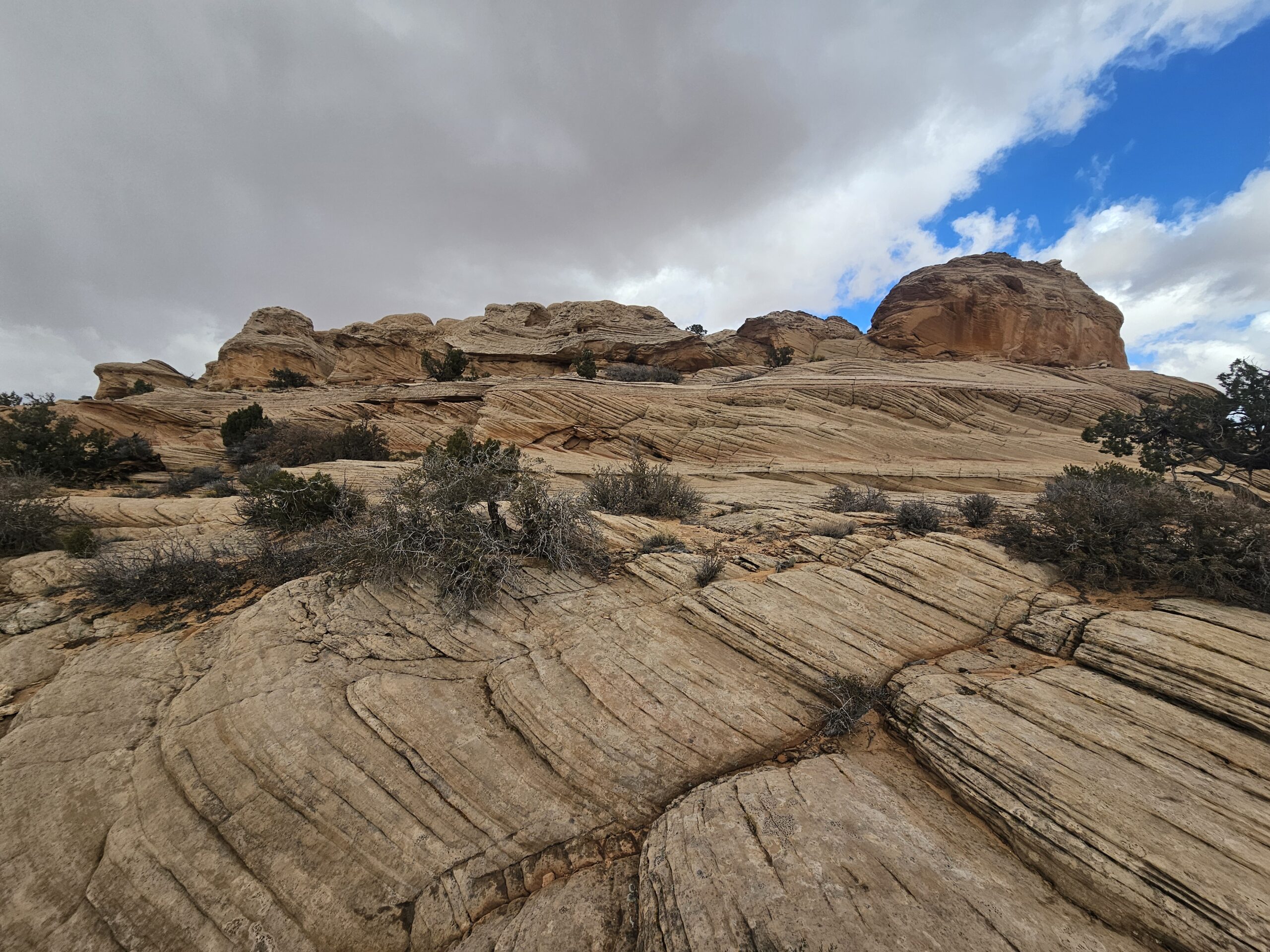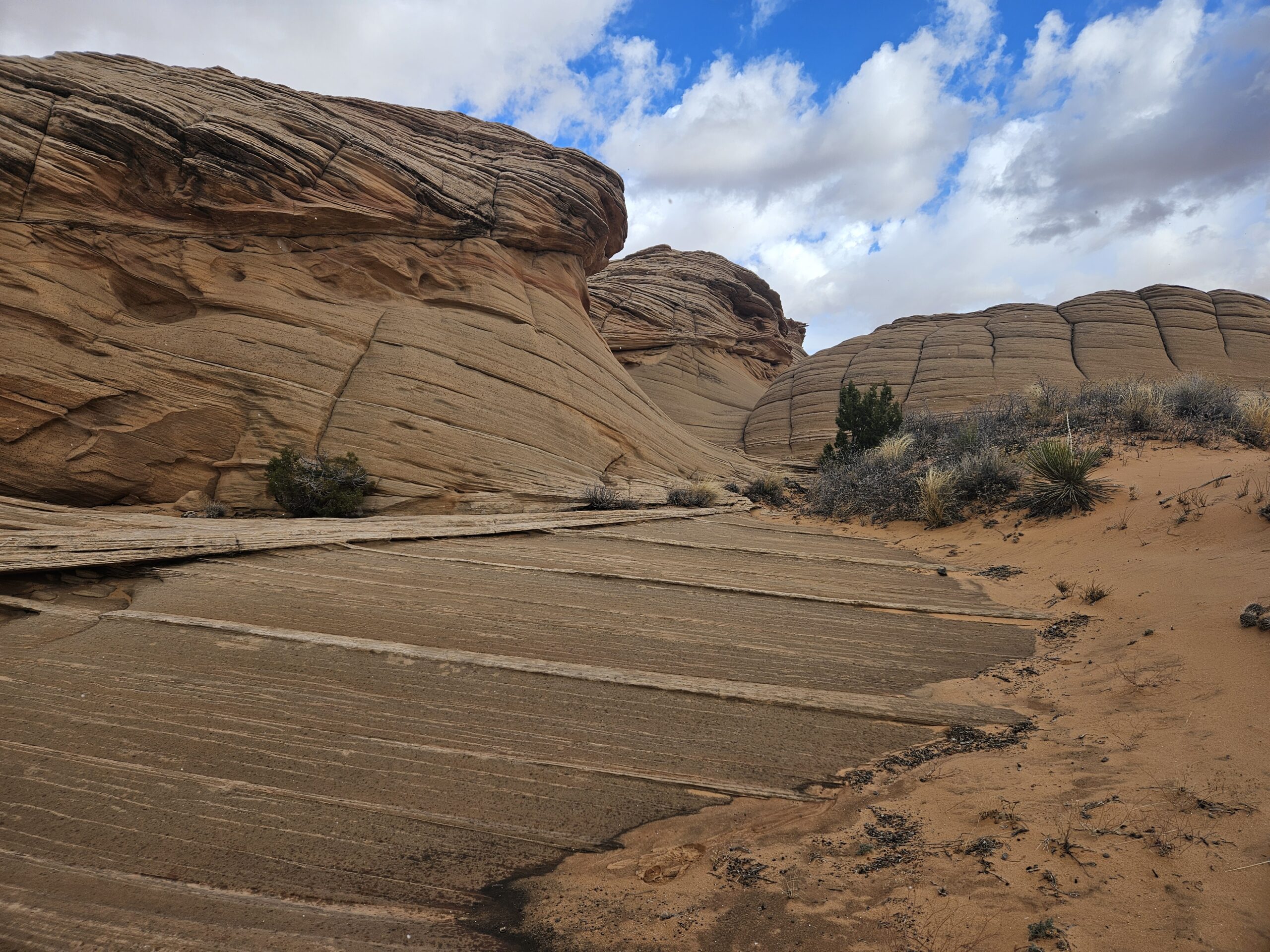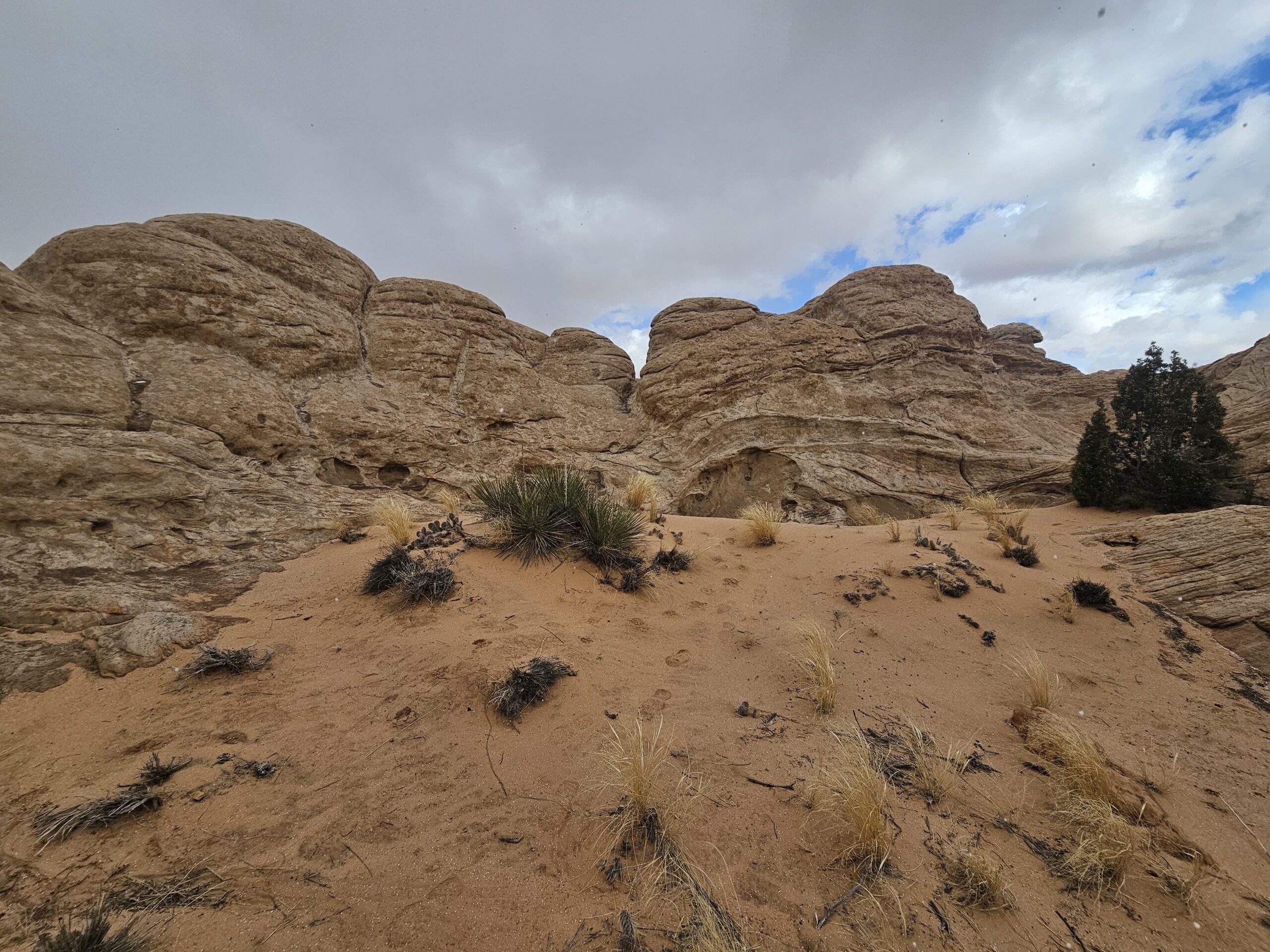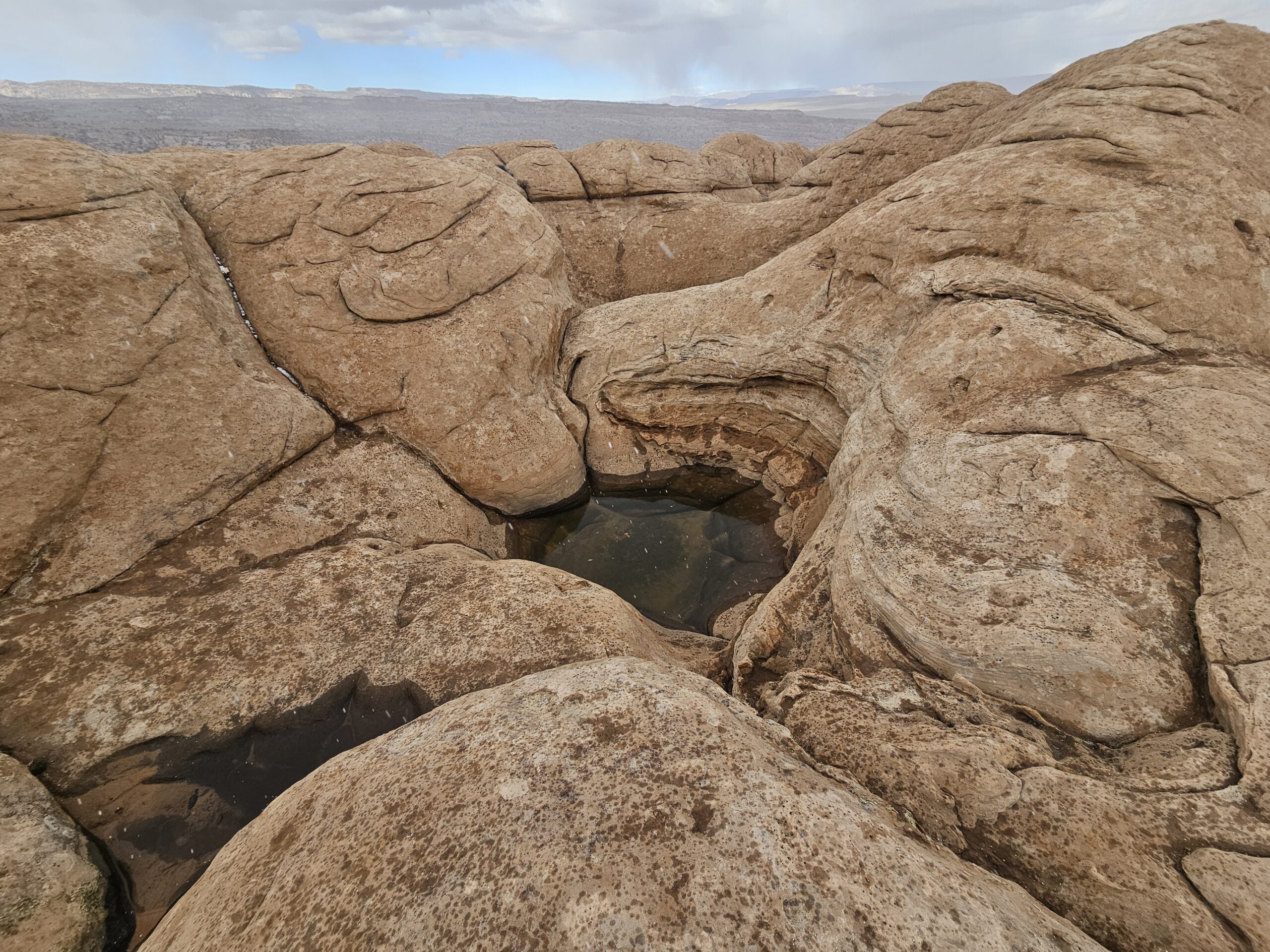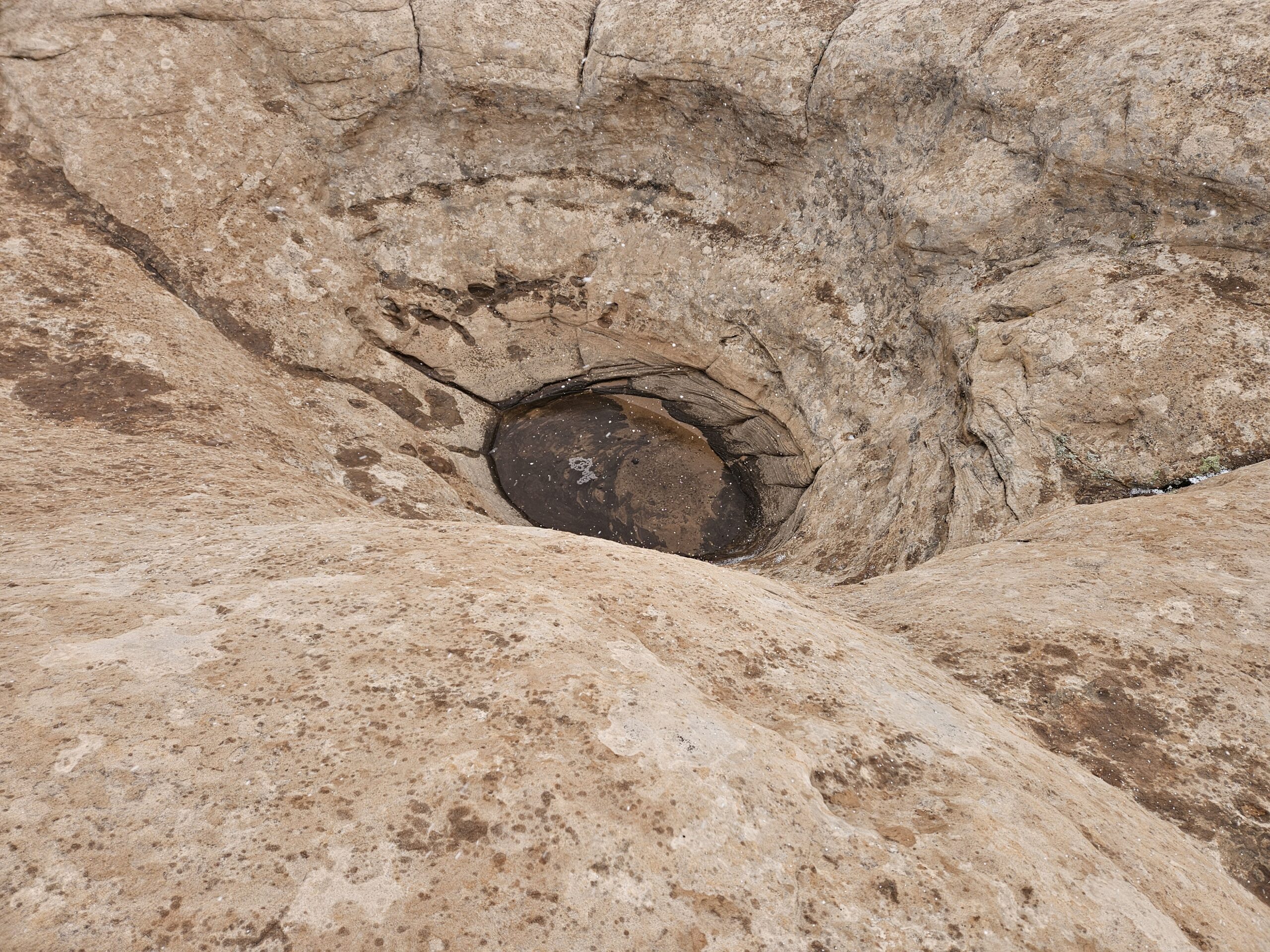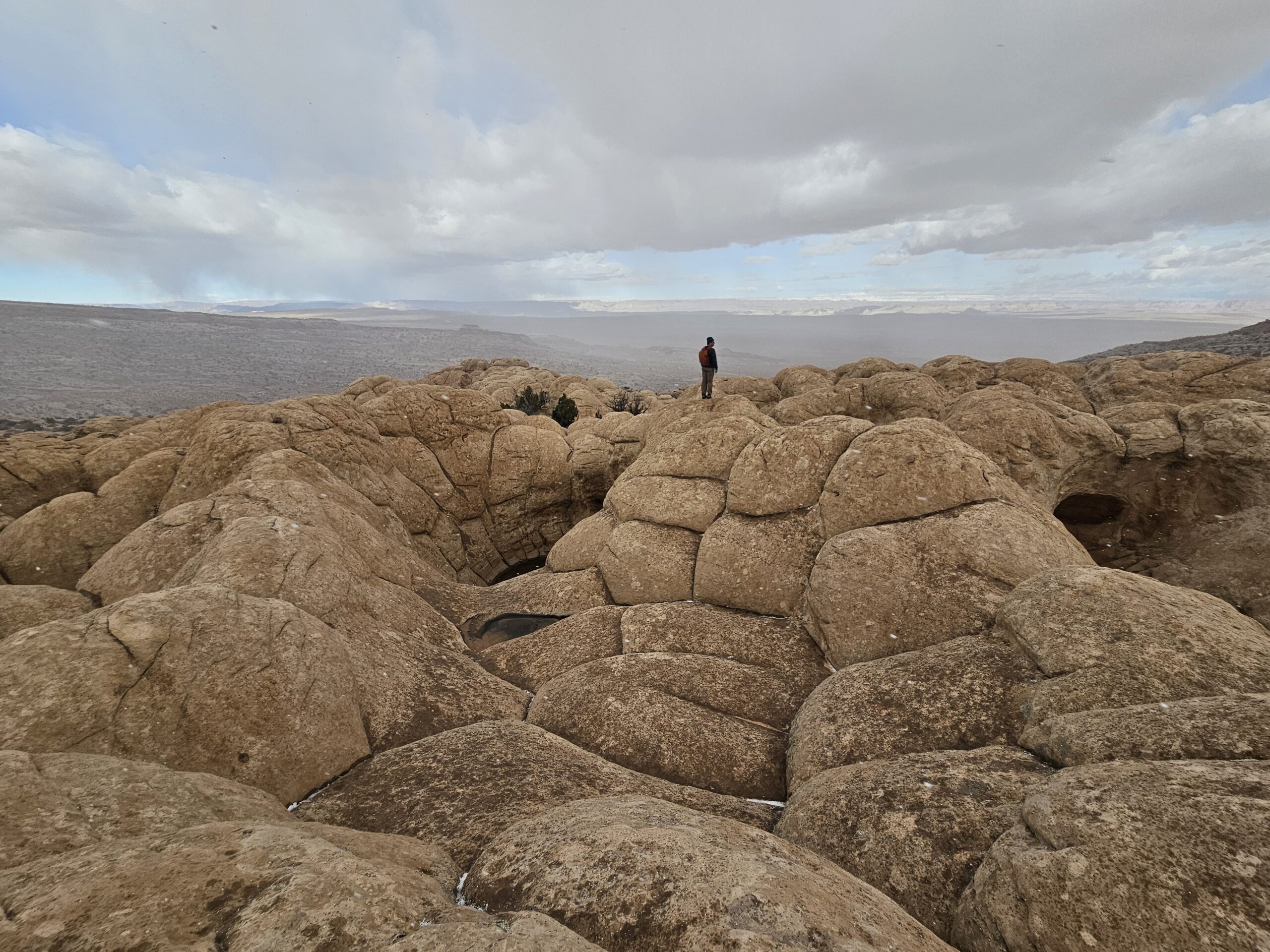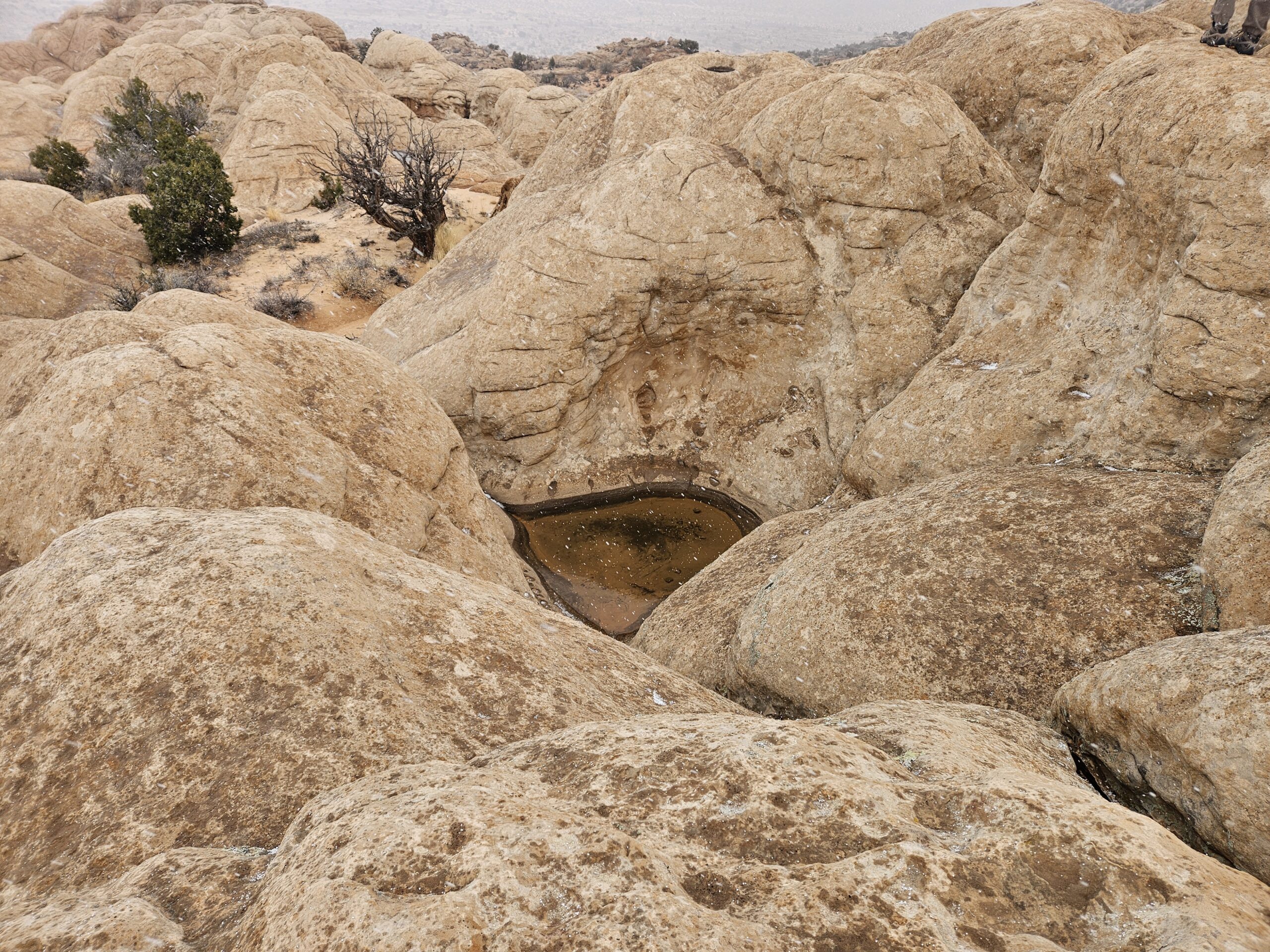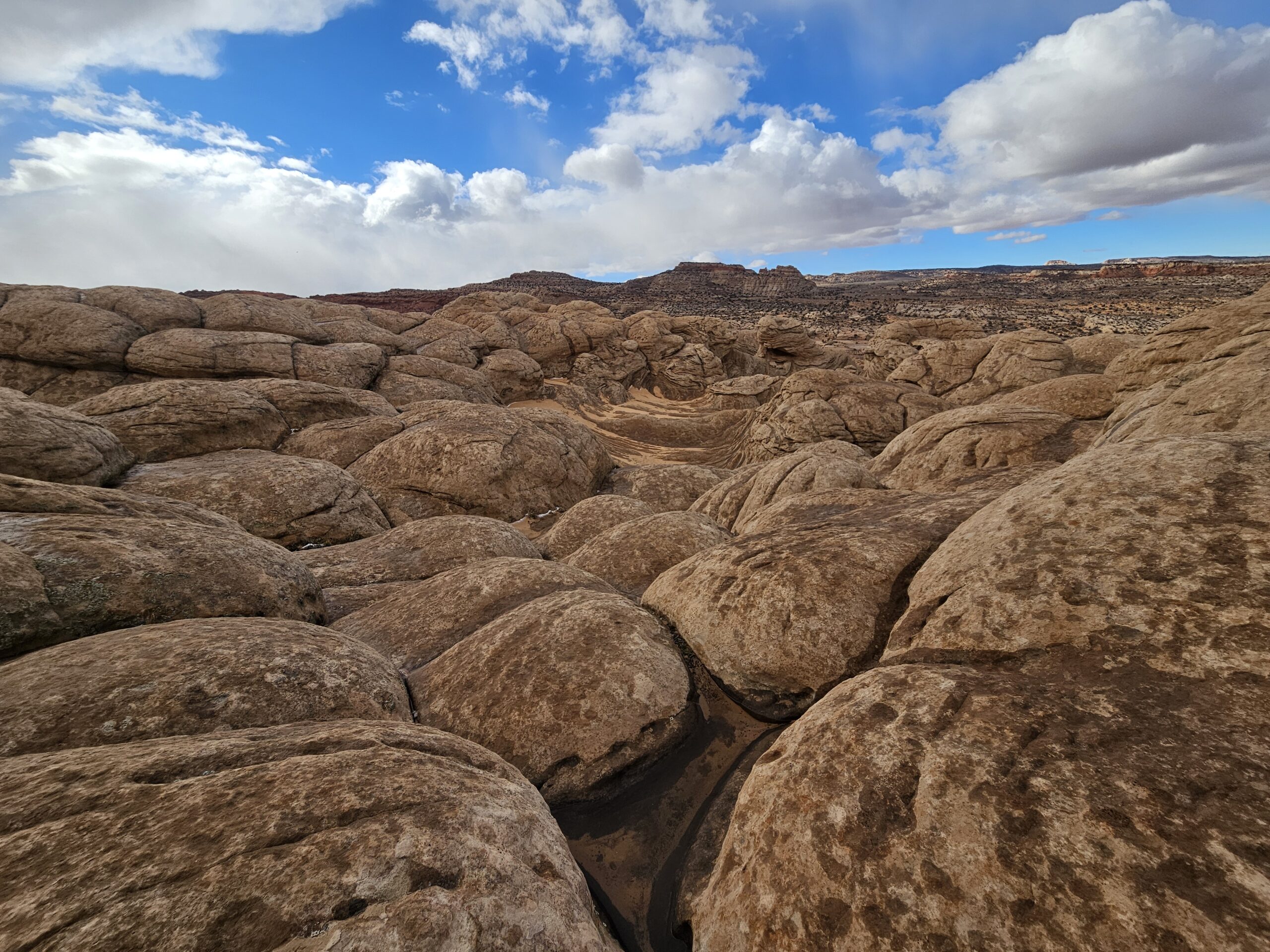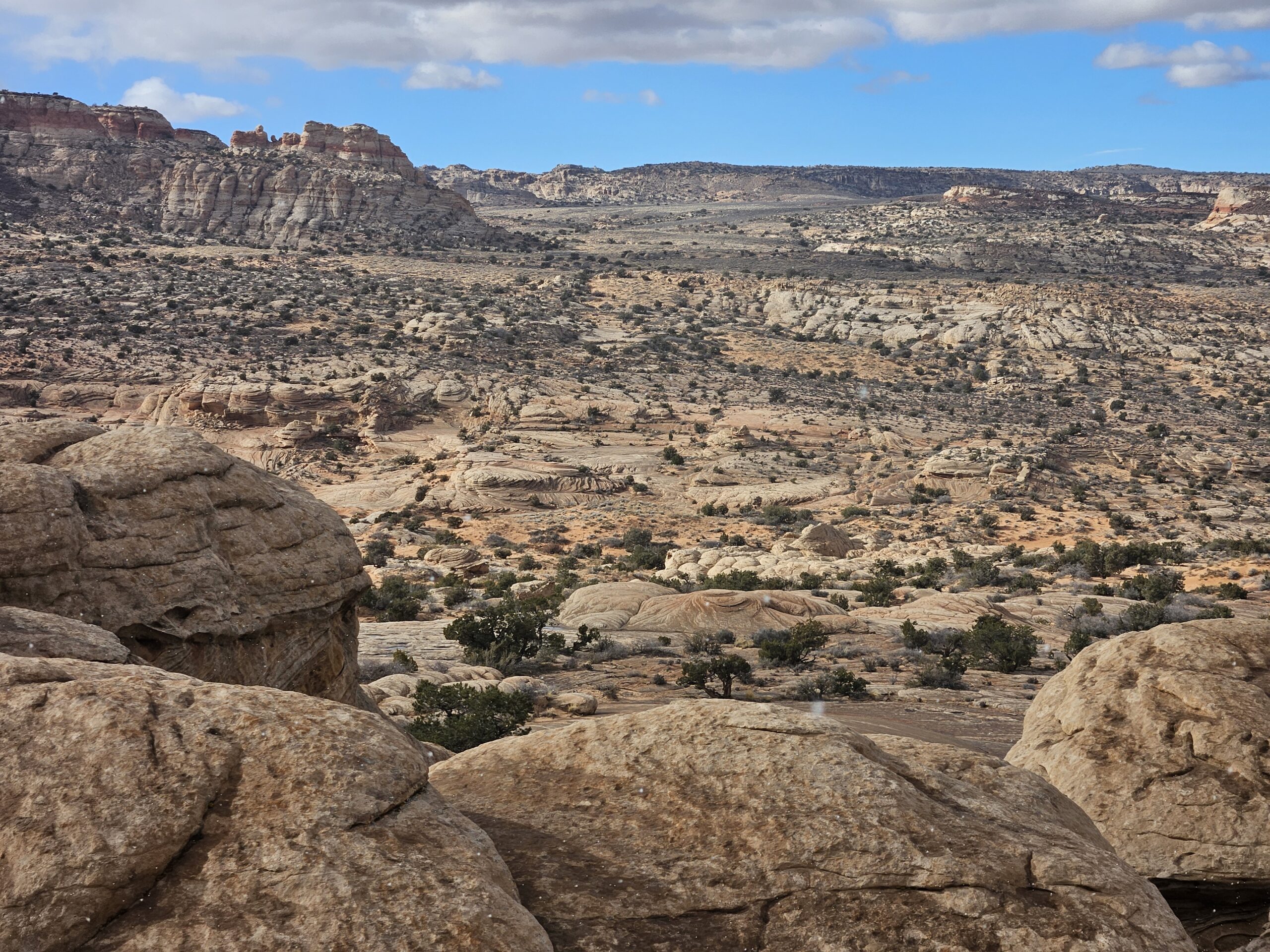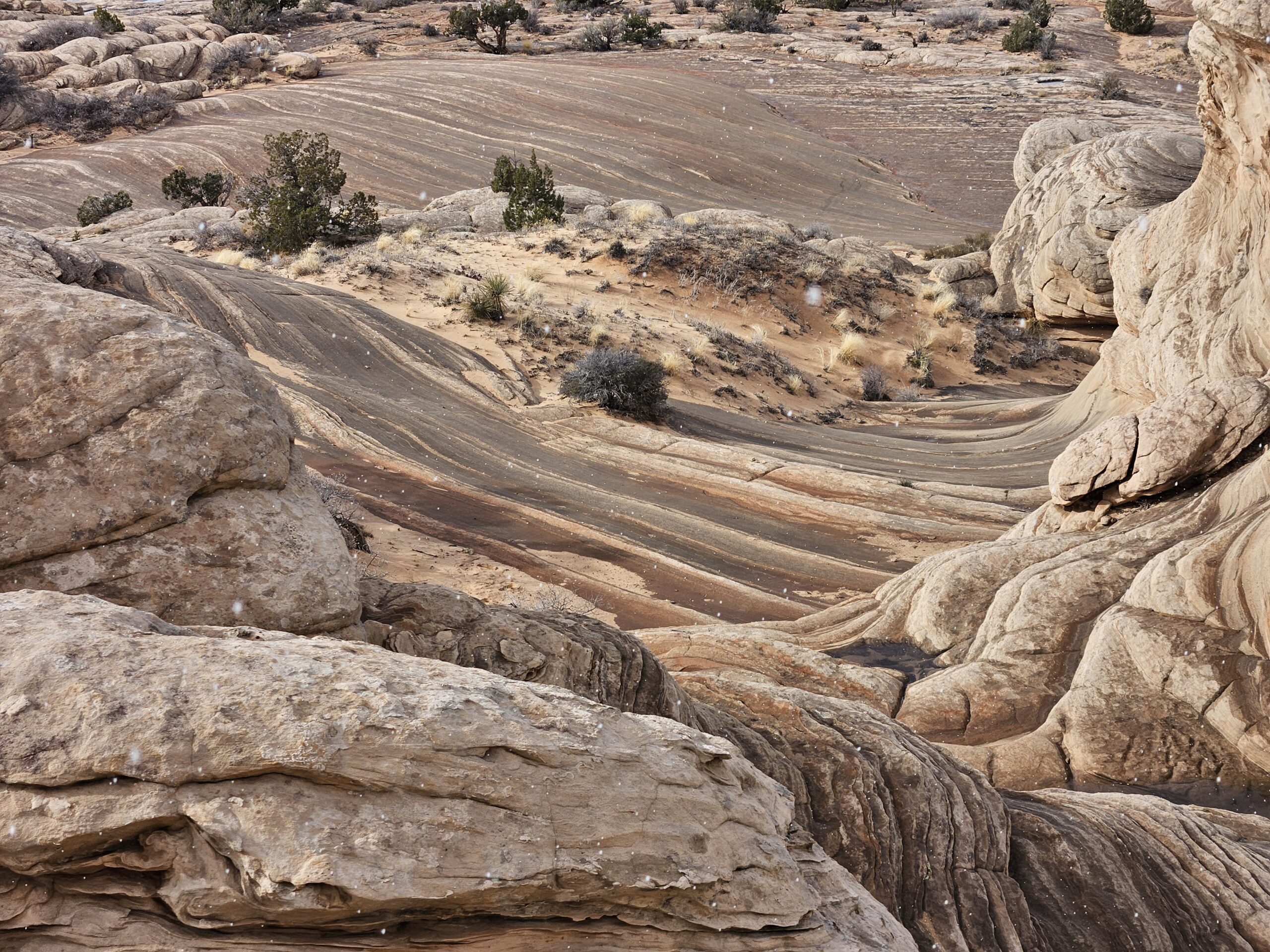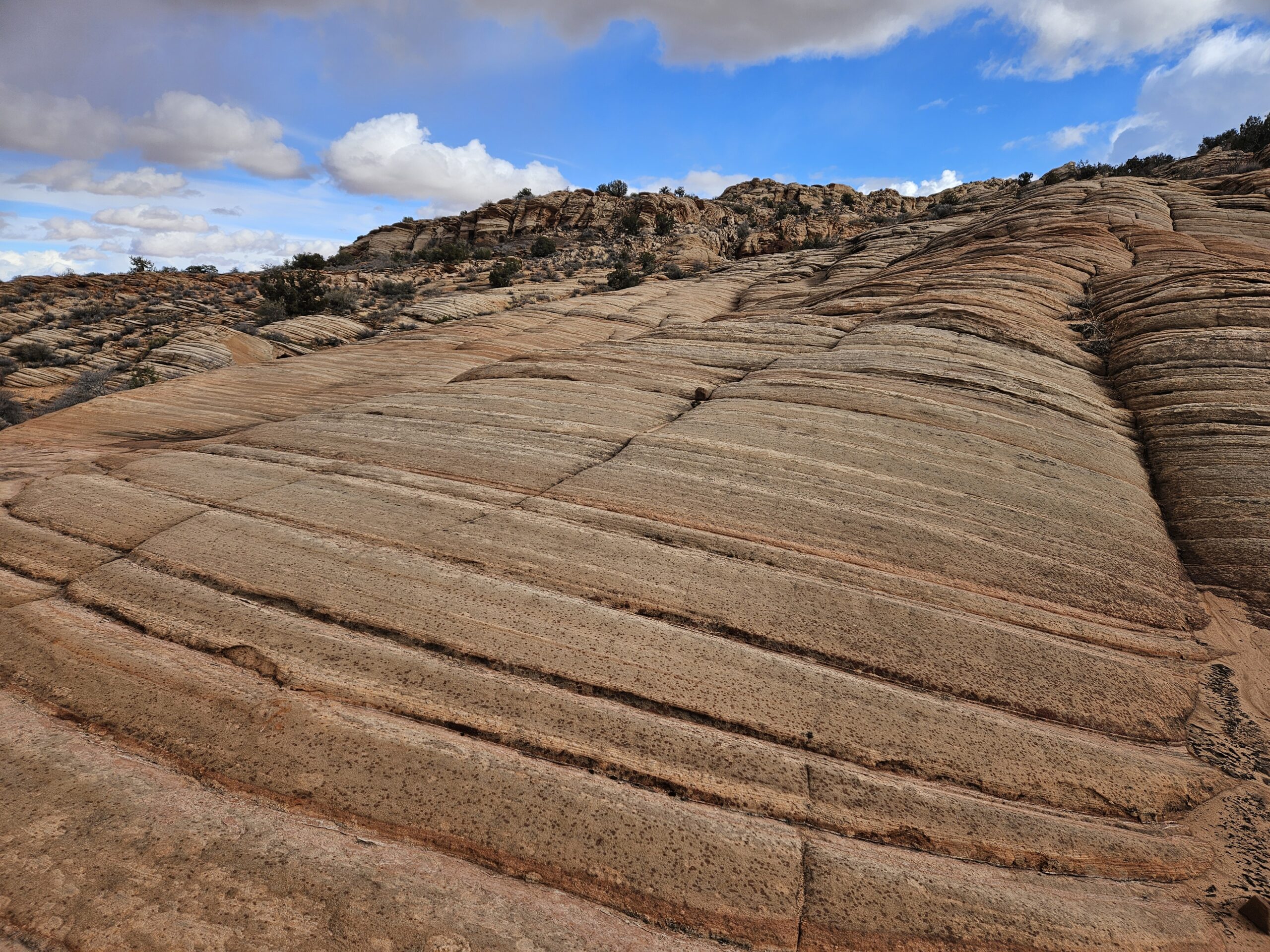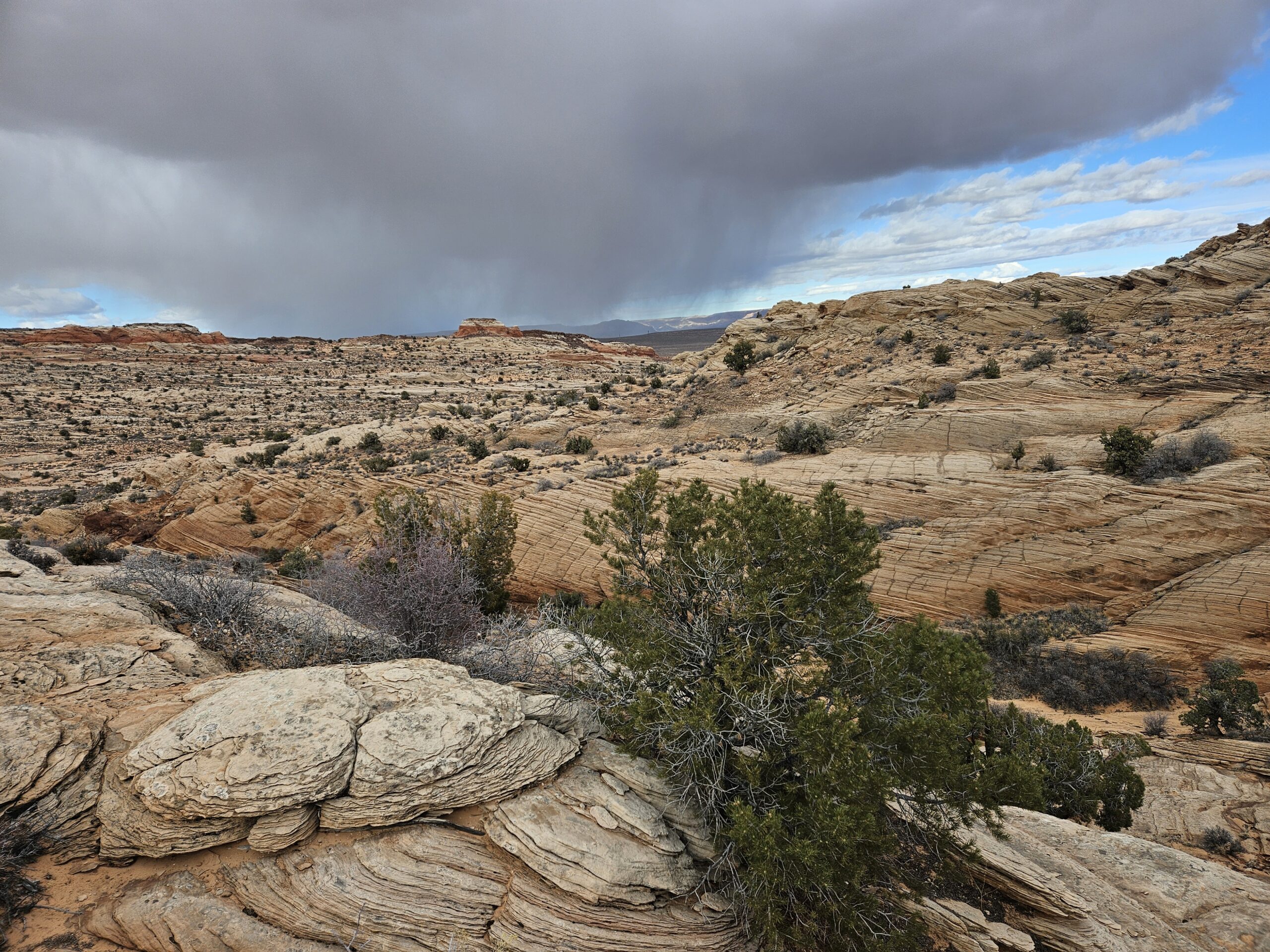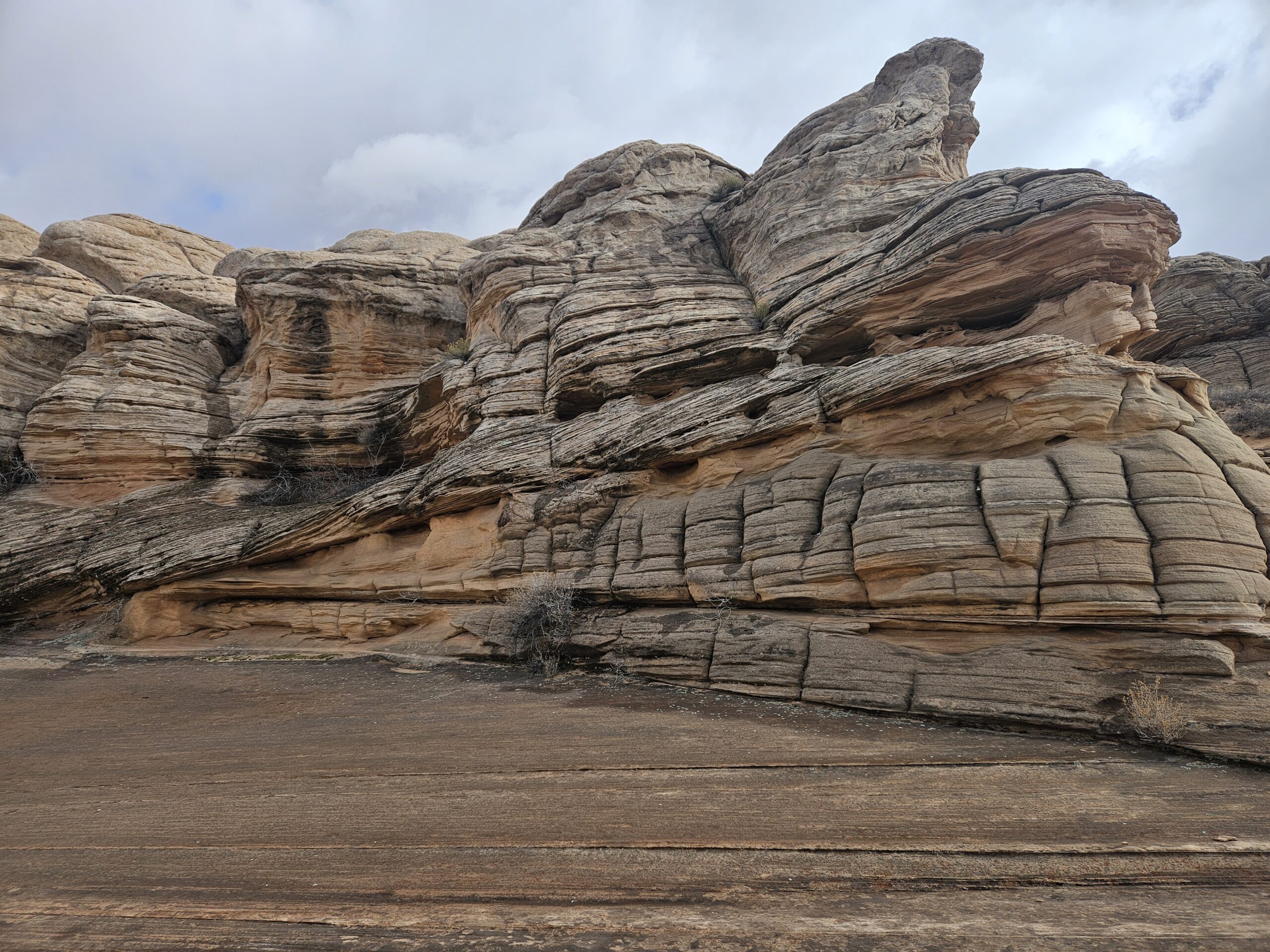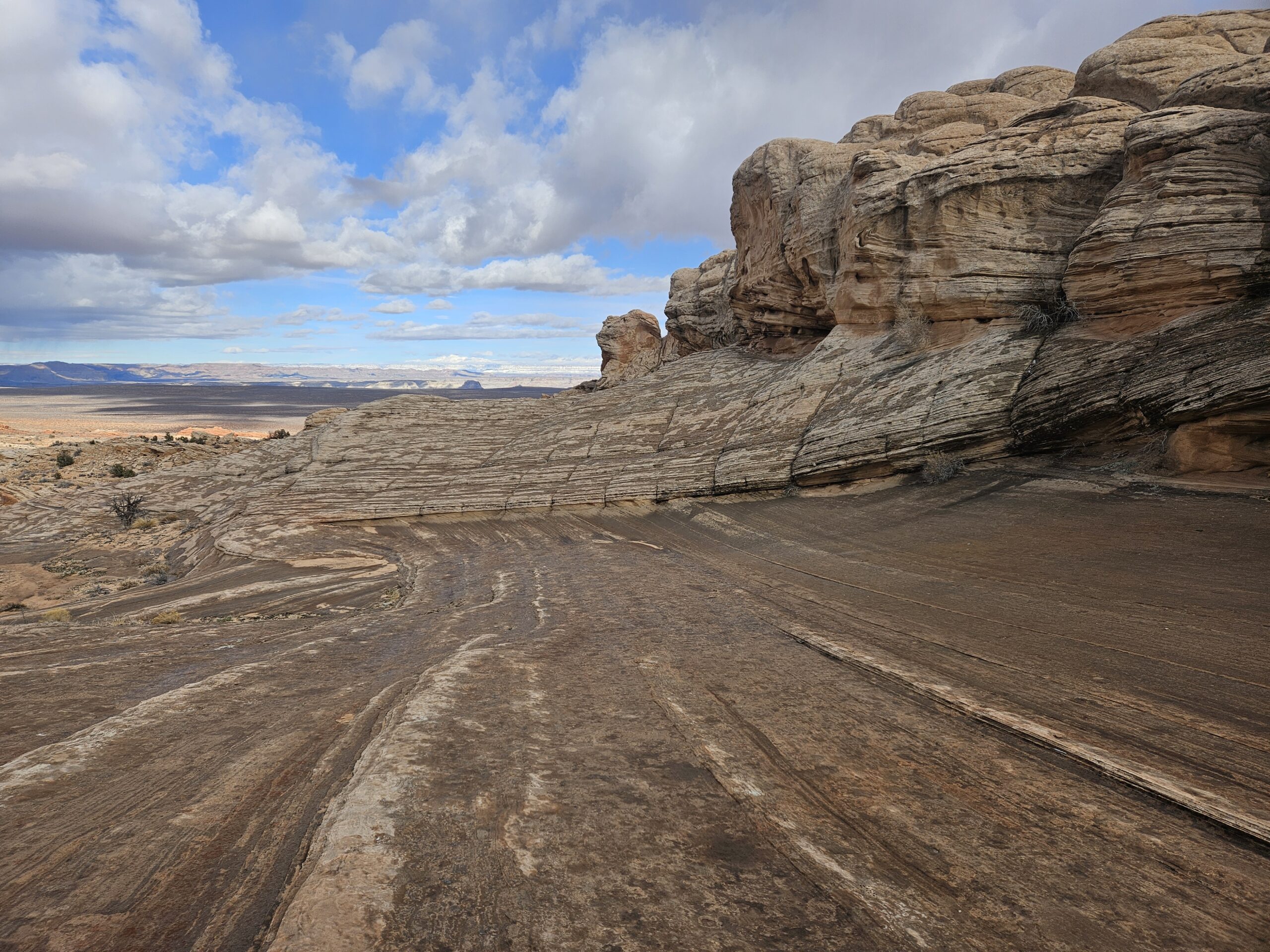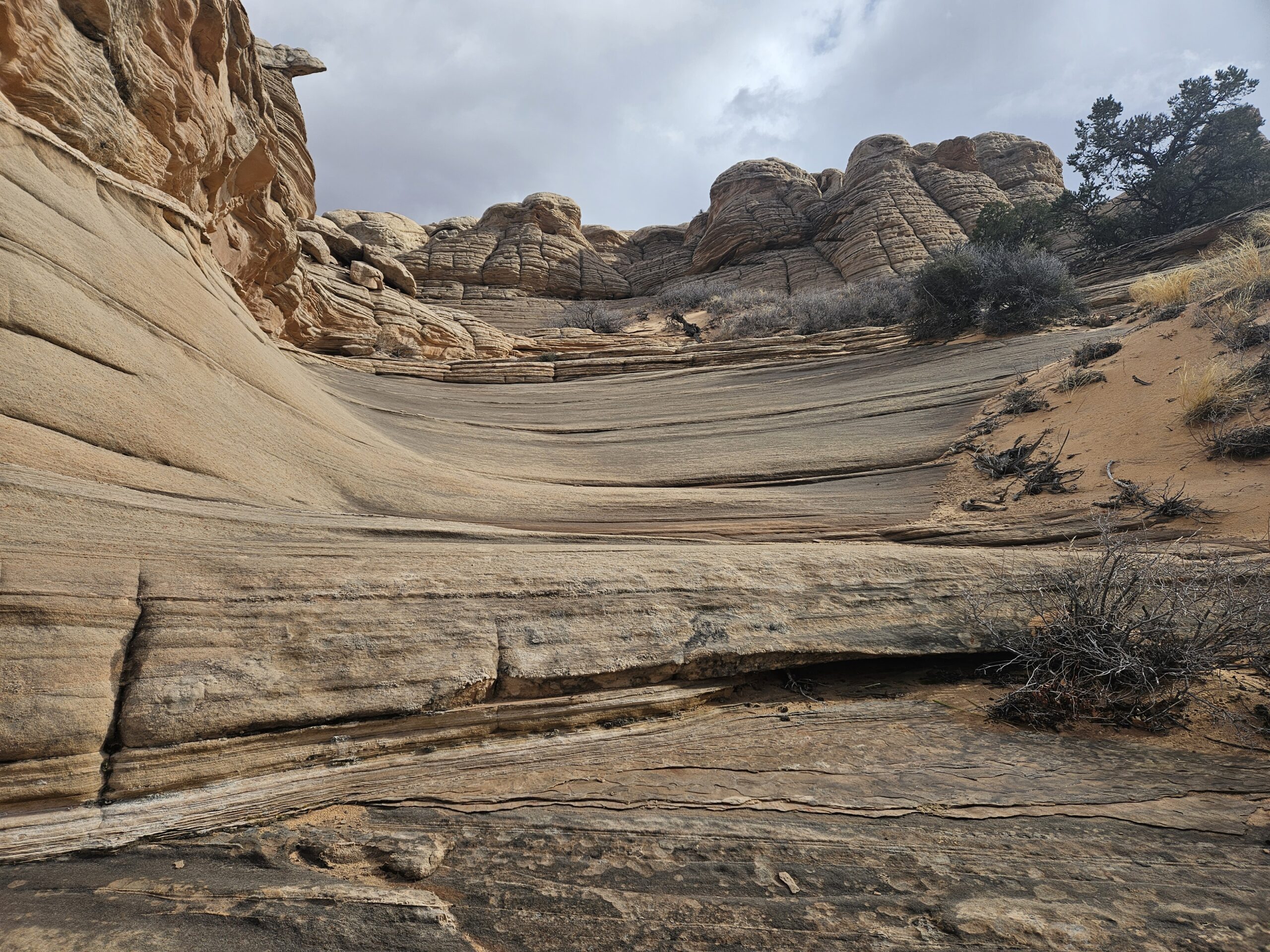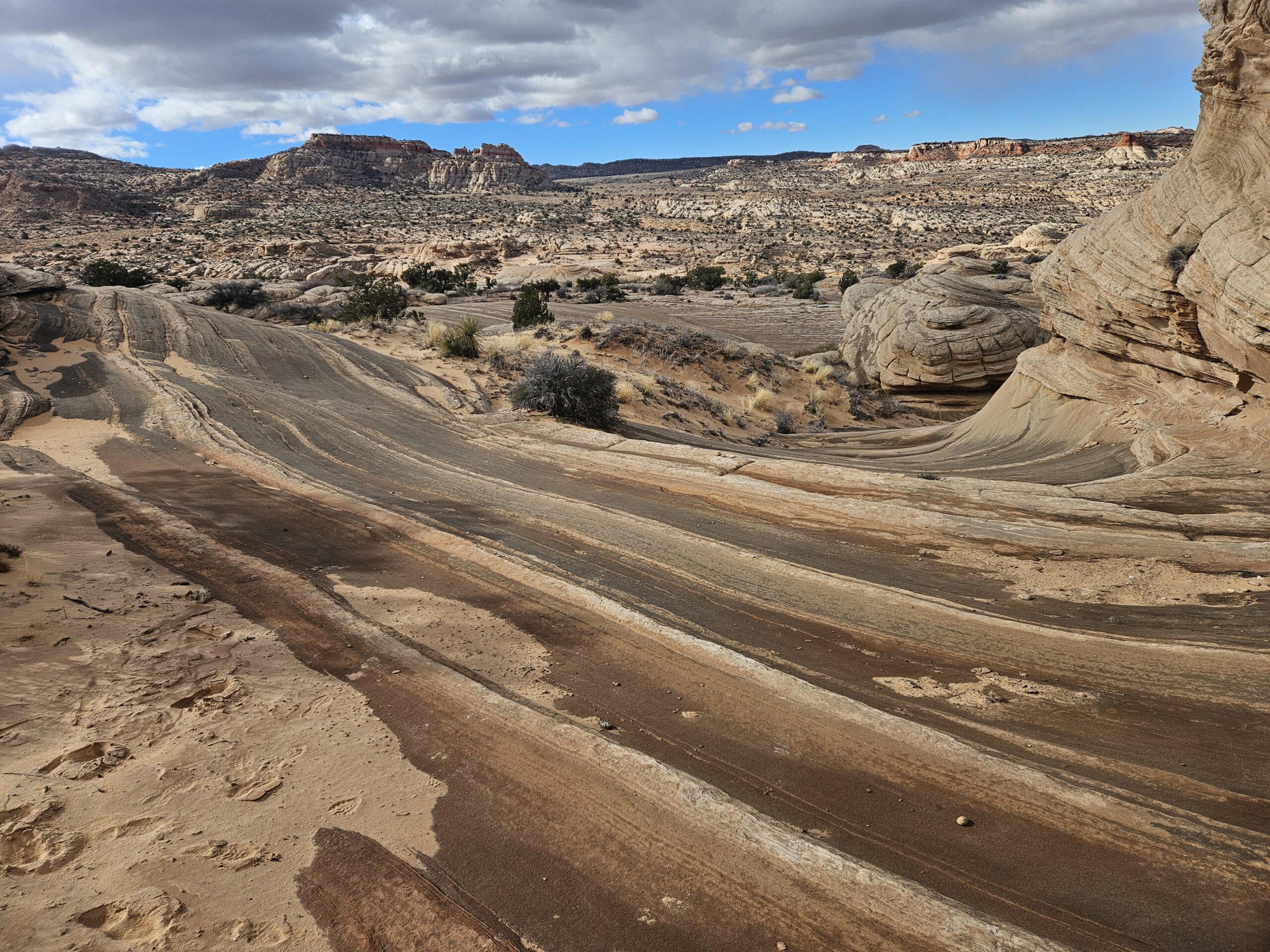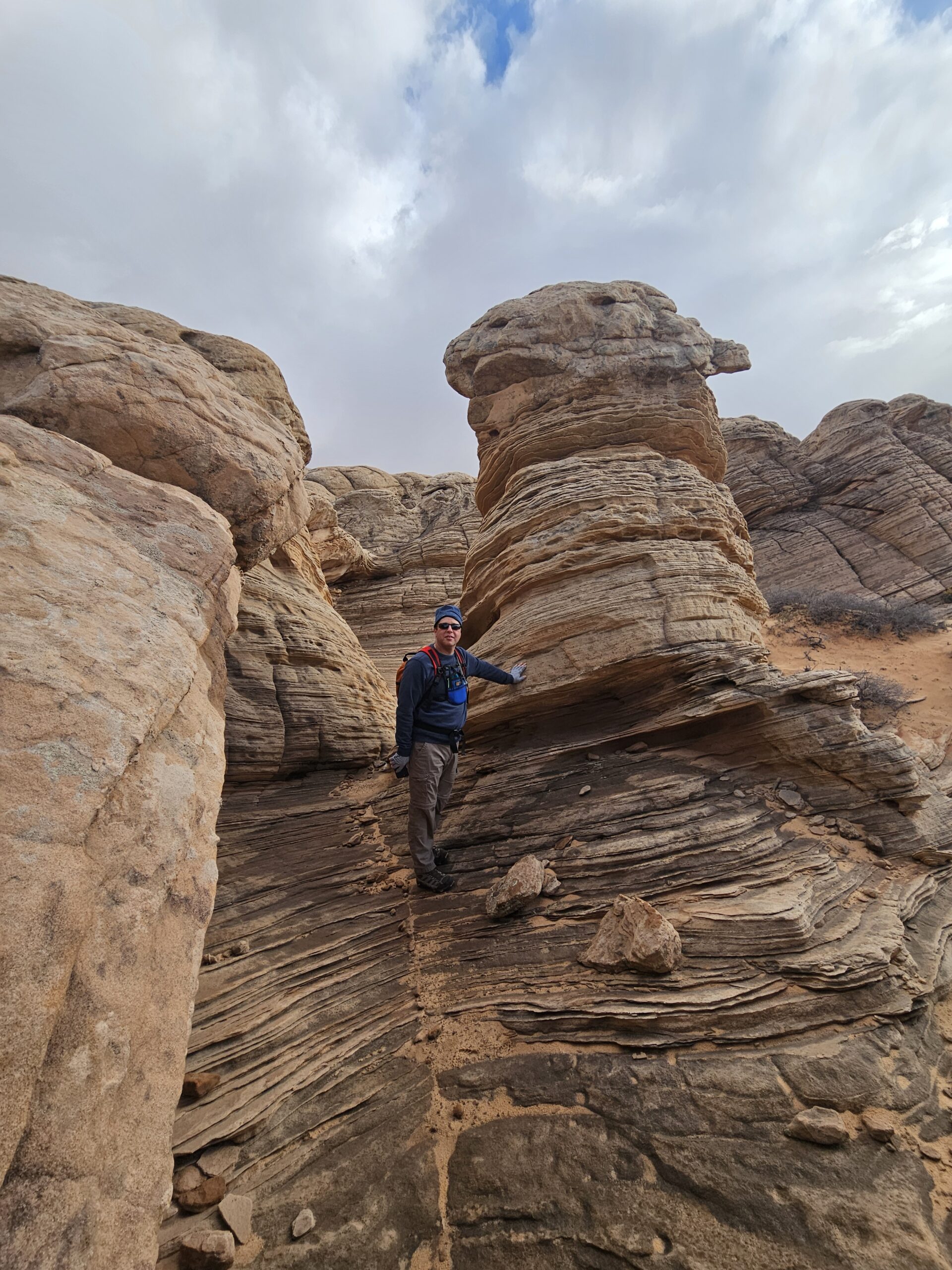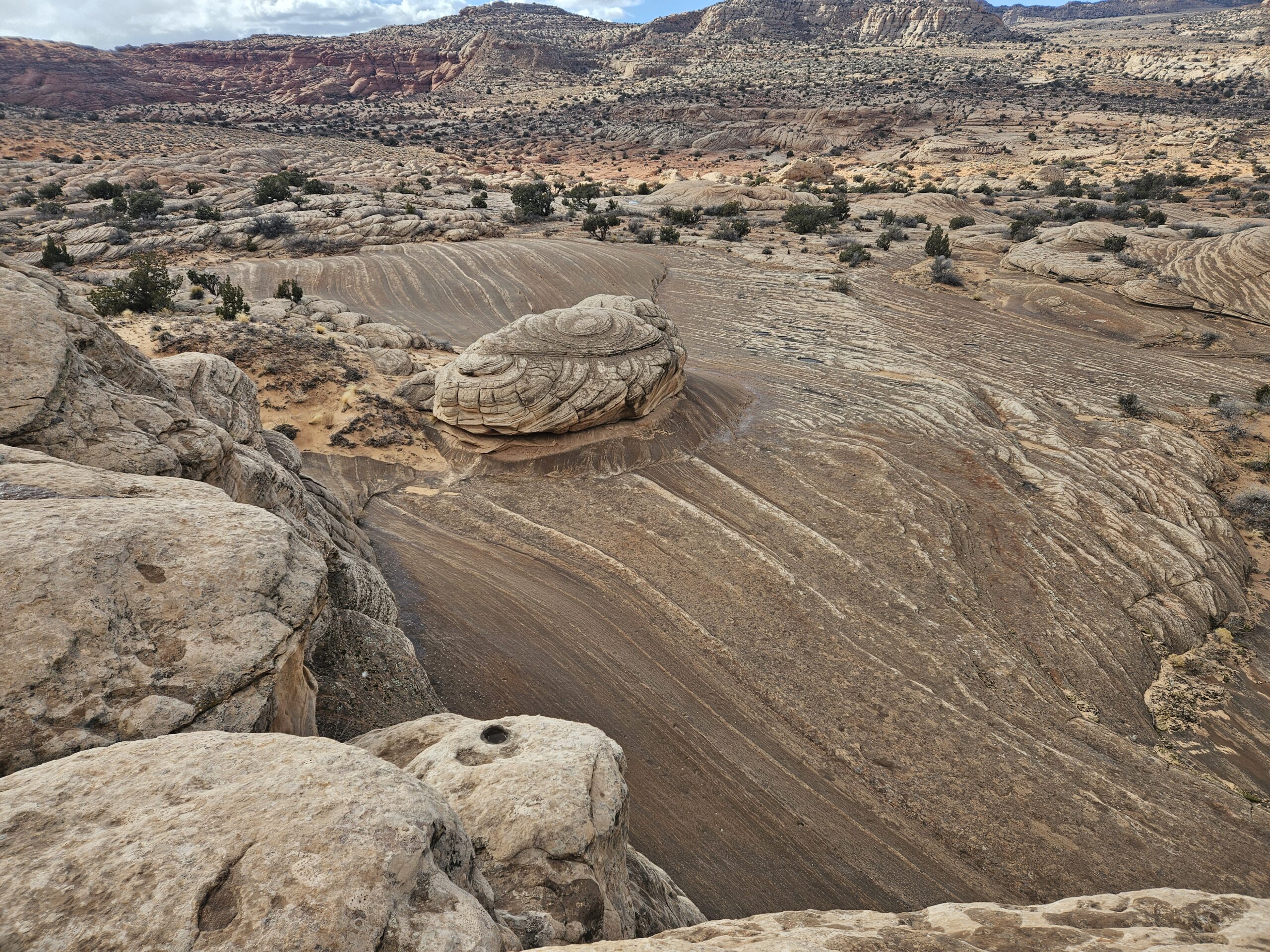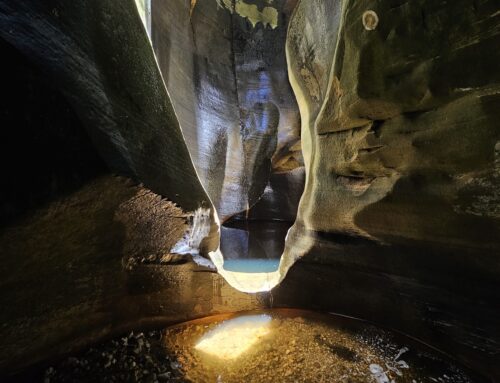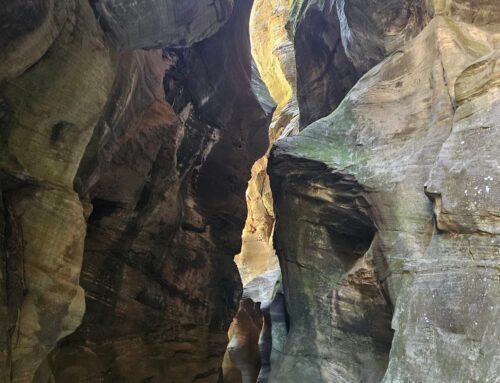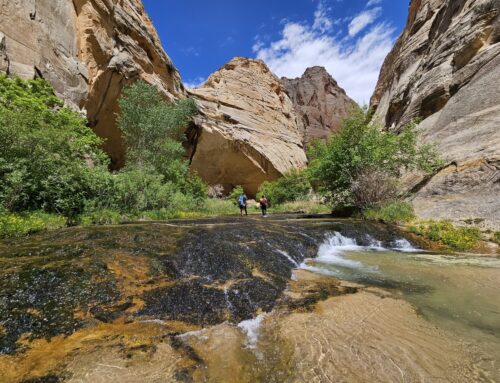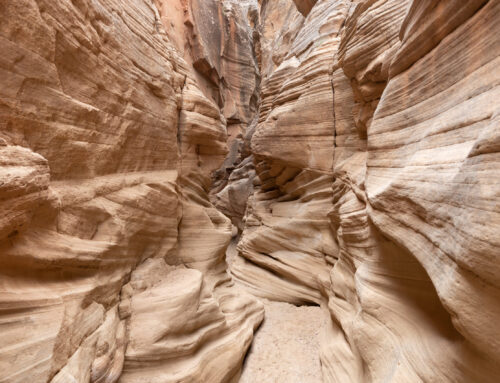If you’re craving solitude and a fascinating introduction to how water impacts the desert, Thousand Pockets right near Page, Arizona might be a great winter hike for you. Winter or early spring is a great time to visit this corner of the Vermillion Cliffs National Monument, particularly after rain or snow. Precipitation helps compact the very sandy roads and makes this drive a lot safer and more pleasant. It’s also best to visit when the water pockets are full to get the full experience of water in the desert.
There is no obvious trail in most of this area and a huge diversity of formations to see, so you can spend as much or as little time as you want wandering around. To get to the area with the pockets, walk southwest along the sandy trail until you find a wash. Descend into the wash and continue west through small but pretty narrows until you see a dry fall. Walk around and up the slope next to the dry fall and continue up the slope above the dry fall and then further southwest along a second wash.
Leave the wash at the point of your choosing and head southeast to the main areas. You will be doing some climbing – it’s about 650 feet of elevation gain total. Please take care to walk on rock surfaces and not on desert crust. You will eventually come to an area featuring sculpted domes and interesting shapes slightly reminiscent of South Coyote Buttes but less colorful. There are several ways to enter the main section, and there are several arches and other structures of interest that can be found via exploration.
The section of large pockets is very unique. They are huge and about 20-30 feet deep, carved out of white cauliflower-type sandstone. The potholes are effectively stacked right on top of each other. The effect is that of walking on the rims of large bowls partially filled with water. These potholes can be an important source of water for wildlife and insects, especially during the hot summer months. In his groundbreaking book: “The Secret Knowledge of Water”, Craig Childs mentions his explorations in this area while surveying water sources in the desert.
The walls are very steep so be careful not to slip. Fortunately, the sandstone is extremely grippy and fairly easy to navigate. There is some scrambling necessary to make it through these formations. On our most recent trip this weekend, we were fortunate enough to experience a brief hailstorm right as we were approaching the top. The hail collected in little cracks between the rocks and there was quite a lot! Fortunately, the storm passed fairly quickly, and we were left with moody skies and fabulous light.
After we were done exploring this section, we climbed down on the western side of the tanks, where there is a really beautiful formation we call the “brown wave”. The brown bands of sandstone are quite stunning, surrounded by hoodoos of various shapes. We wandered around this area a bit longer and decided to head back via a loop route that took us back into the wash and then back to our car. Due to the weather and threatening skies, we decided to head back sooner than we anticipated, but got some wonderful cloud shots this time around. As always, not a soul was in sight.
